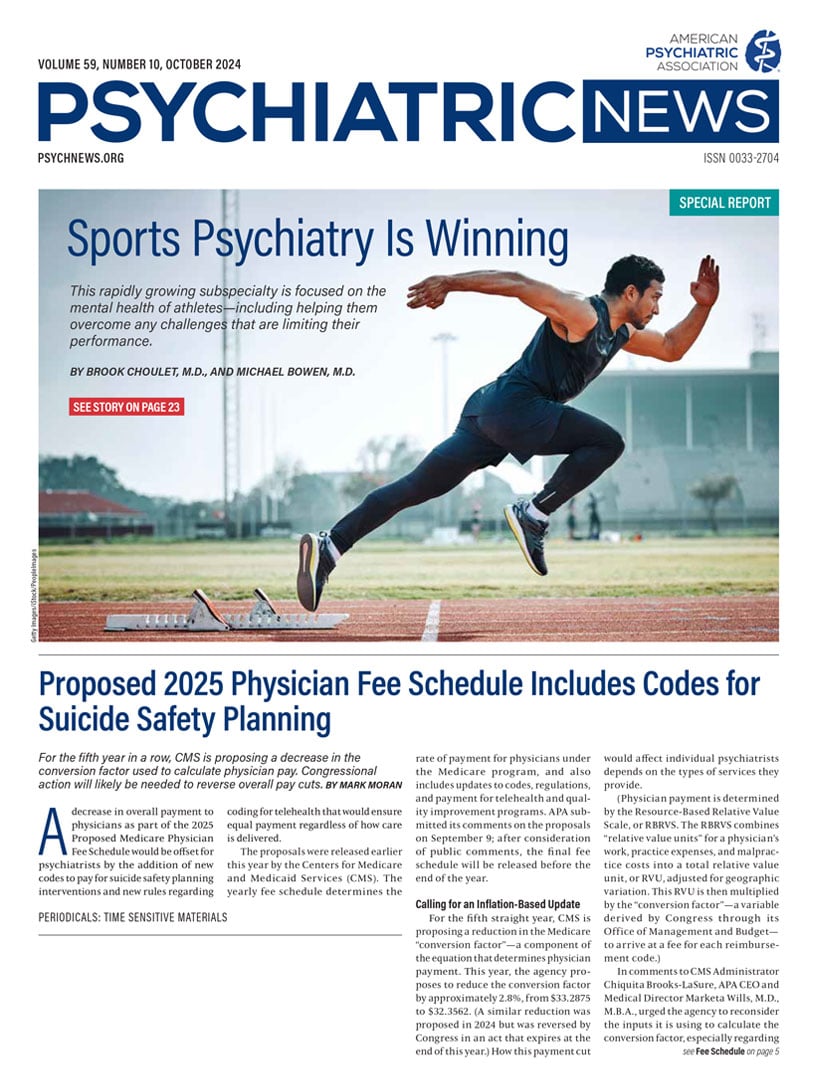The share of children and adolescents who are taking three or more classes of psychotropic medication is on the rise, along with the duration of such treatment, raising concerns over lack of evidence for and efficacy and safety of such regimens.
Various studies show that youth in foster care or with public insurance have some of the highest rates of multiple psychotropic use. Experts in the field are promoting the concepts of “smart prescribing” and “deprescribing” to combat the practice.
“Concurrent use of multiple psychotropic medications, also referred to as polypharmacy, is a safety concern in pediatric psychiatry,” Yueh-Yi Chiang, B.S., of the University of Maryland School of Pharmacy, and colleagues wrote in a study
issued in August by
Psychiatric Services.
Chiang and colleagues found that about one-quarter of Medicaid-enrolled youth with a mental health encounter were prescribed at least one of six psychotropic medication classes (antipsychotics, mood stabilizers, antidepressants, anxiolytics, sedatives, and attention-deficit hyperactivity disorder [ADHD] medications), according to health records in one unnamed Mid-Atlantic state. In fact, they found an increase in the proportion of Medicaid-enrolled youth who were treated concurrently with three or more psychotropic drug classes—from 4.2% in 2015 to 4.6% in 2020. The most common triple combination was an ADHD medication plus an antipsychotic and an antidepressant.
What’s more, the youth were exposed to polypharmacy for an average of seven to eight months out of the year. Over the five-year study, the average annual duration of psychotropic polypharmacy increased by more than one week.
A
review issued by
Frontiers in Psychiatry in 2021 involving 35 studies also found that pediatric psychotropic polypharmacy grew substantially in the United States over the previous 25 years. Julie M. Zito, Ph.D., of the University of Maryland School of Medicine, and colleagues estimated that as many as 300,000 youth were affected. Furthermore, researchers found more adverse event reports were associated with 3-class combinations compared with 2-class drug regimens.
Role of Trauma, Abuse
Children who have suffered from maltreatment or abuse, as can be the case in foster care, often develop severe behaviors, W. David Lohr, M.D., a professor of child psychiatry and pediatric psychology at the University of Louisville School of Medicine, told Psychiatric News. “For those kids, medications can help control or reduce those behaviors, sometimes enough to allow a foster parent to be able to keep a child in their home safely,” said Lohr, who also serves as chief medical officer and medical director for the Kentucky Department for Community Based Services.
Increasing awareness of mental health issues and willingness of parents/caregivers to seek treatment for their child are positive developments that might also factor into increased prescribing, Lohr added. “We want everyone who needs care to be receiving treatment.”
At the same time, medications cannot address “what’s happened to the child and reduce the underlying effects of trauma and maltreatment. That comes from establishing long-term relationships with caring, nurturing adults,” Lohr said. Youth being given psychotropic medications should also receive psychosocial treatment, he emphasized. But limited insurance coverage for psychosocial therapy and therapist availability are nationwide concerns.
Timothy VanDeusen, M.D., medical director at the West Haven Mental Health Clinic and associate professor of psychiatry at Yale School of Medicine, told Psychiatric News he cares for many young adults who have now aged out of foster care but have been treated with antipsychotics and several medication classes for a decade or more in the public mental health system.
“Many patients come to me on a boatload of medication,” VanDeusen said. “These kids do have real disorders and need to be medicated at some level. What gets out of hand is the duration of treatment and the number of medications.”
How Polypharmacy Happens
Polypharmacy results when one drug is not working, and instead of swapping it out, a prescriber adds another class of medications. “So, there’s a cumulative effect over time,” VanDeusen said. A prescribing cascade also plays a role; for example, a child is prescribed a stimulant because of attention deficit disorder, which leads to moodiness and irritability, so an antidepressant is added; then lithium or anticonvulsant eventually is needed for mood stabilization. “It just goes on and on,” VanDeusen said.
“Big Pharma has also had a lot of influence on this,” VanDeusen said. “Now second-generation antipsychotics are marketed as an adjunctive treatment for depression to boost the effects of [selective serotonin reuptake inhibitors] and as treatment strategies for bipolar disorder, ADHD, autism, and behavior disorders.”
Side Effects Compound
However, APA guidelines advise against concurrent prescription of more than one antipsychotic medication, as well as against the routine prescription of antipsychotic medication to treat behavioral and emotional symptoms of childhood mental disorders. The guidelines also state that metabolic, neuromuscular, and cardiovascular side effects may occur in patients receiving antipsychotic medications for any indication, and suggest ongoing medical assessment and monitoring for various potential side effects.
Over the long term, studies show that antipsychotics often result in patient weight gain, metabolic syndrome, type 2 diabetes, and an increased risk of cardiovascular disease or stroke. “One concern is that we don’t have sufficient data about the efficacy or side effects [of polypharmacy regimens],” Lohr said. “We don’t know if they work. Is it doing what we think it’s doing? Are three meds doing a better job than two, or are four doing a better job than three?”
VanDeusen often encounters resistance from parents or caregivers, group home staff, and even school administrators when he advises a reduction in a child’s medications. “Once a child is stabilized on five medications, and the child has no more hospitalizations or aggressive behaviors, no one wants to rock the boat,” he said.
Beginning ‘Deprescribing’
Although VanDeusen does not believe that all kids should be off all medications, he does espouse “smart prescribing” with youth, meaning doing as much with as little medication as possible. He has successfully “deprescribed” many of his patients, including one individual who was taking five or six medications when she started seeing him as a teen five years ago and now, as a young adult, does not need any. She currently has a job and is living on her own while continuing to see a therapist.
Lohr has written pediatric deprescribing guidelines, for which he advises looking for opportunities of relative stability in a child’s life or improvements in their condition before proceeding. He targets medications dosed above or below guidelines, used for an extended trial without an attempt at tapering, or used to manage effects of other medications. Lohr’s guidelines also discourage psychotropic use in kids ages 6 or younger.
VanDeusen, who writes and teaches residents and medical students on the topic, suggests starting by culling medications being prescribed at subtherapeutic doses, which may pose risks by interacting with other medications but are likely doing nothing to help the patient. ■


